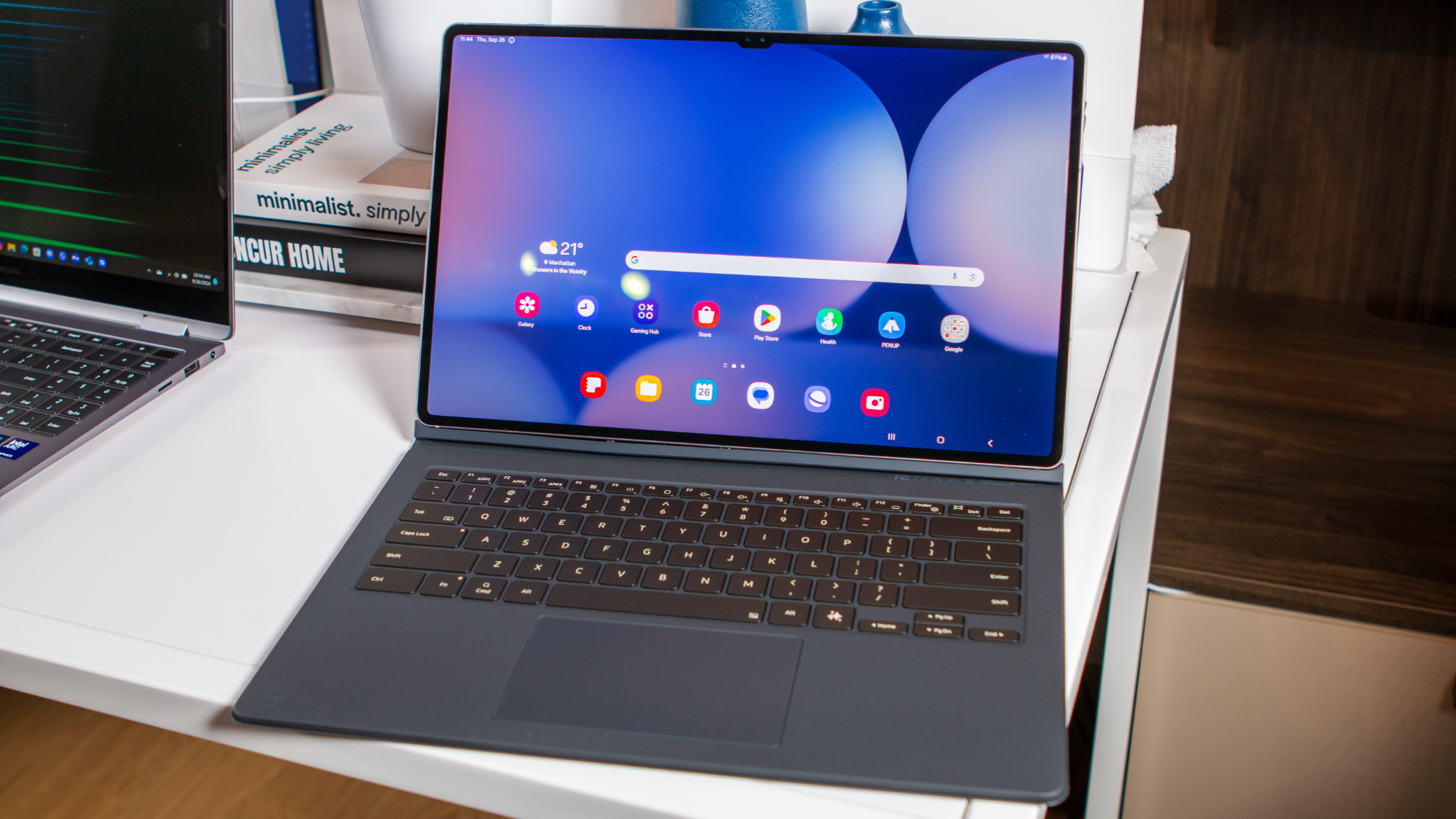
Things are kind of heating up in the Android tablet space, as we’re seeing more and more players get into the mix. However, the only true competition that Samsung has seen, comes from a little company out in Cupertino, California, aka Apple. Samsung is hopeful that with its pending launch of the Galaxy Tab S10 Plus and S10 Ultra, it will be able to pull ahead of Apple and maintain its dominance on the Android side.
Before getting into the nitty gritty, the first major surprise is that Samsung is opting to forgo the 11-inch model. That leaves us with the 12.4-inch Galaxy Tab S10 Plus, and the massive 14.6-inch Galaxy Tab S10 Ultra. Although we don’t know the explicit reason behind this decision, we can surmise that it has something to do with the Tab S9 FE and Tab A9 Plus.
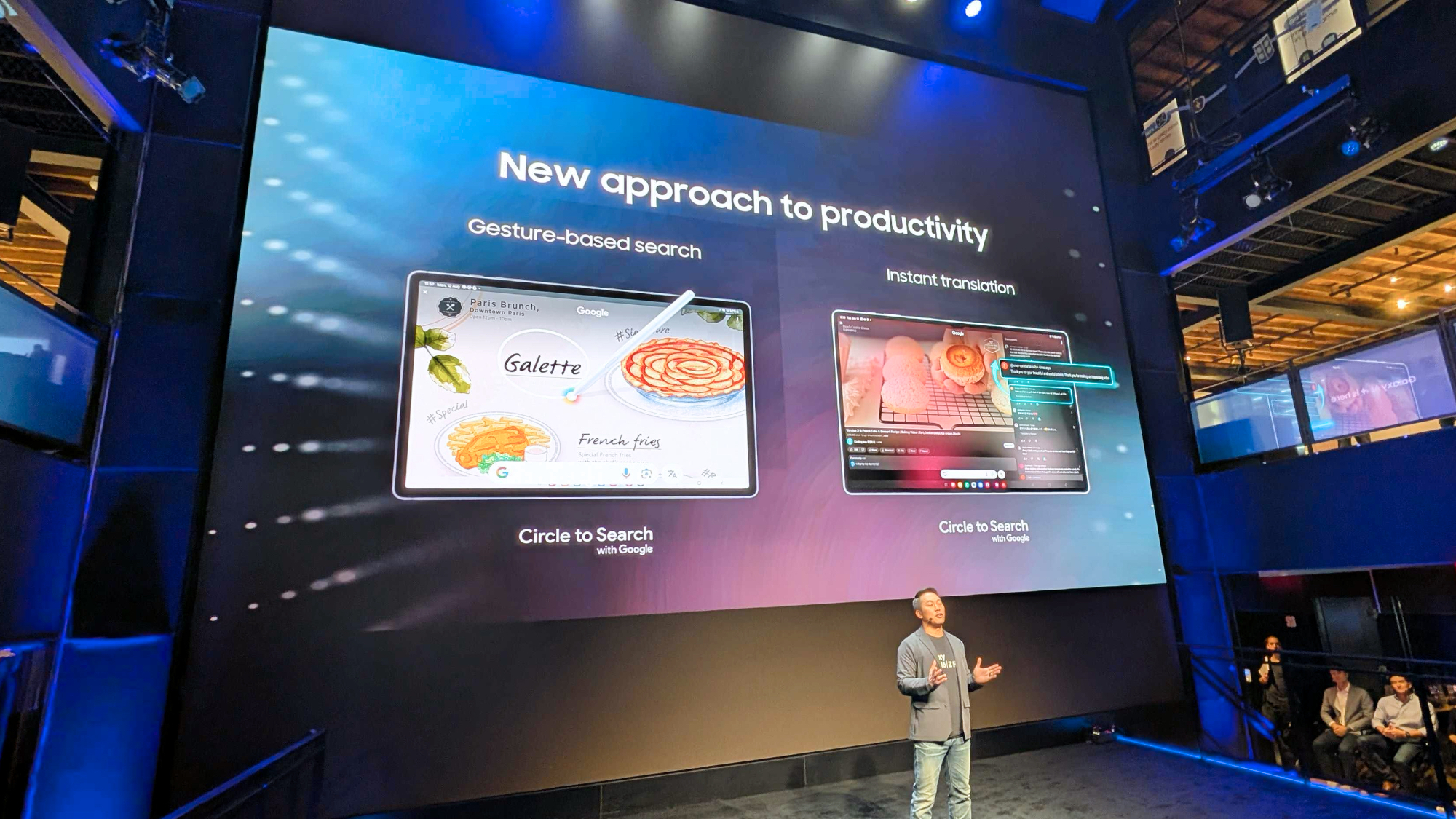
Basically what it seems to boil down to is that if you want a smaller tablet, then the FE is the way to go. Otherwise, you’ll need to spring for the larger and more “premium” options.
With that out of the way, Samsung spent a good amount of time emphasizing a couple of things. The first of which was how Galaxy Tablets help to provide an all-encompassing ecosystem while being able to do much more than just act as a media playback device. No, we aren’t talking about any Pixel Tablet-like experiences, although the idea of a tablet that doubles as a SmartThings hub is rather intriguing.
Take all of the Galaxy AI you can handle
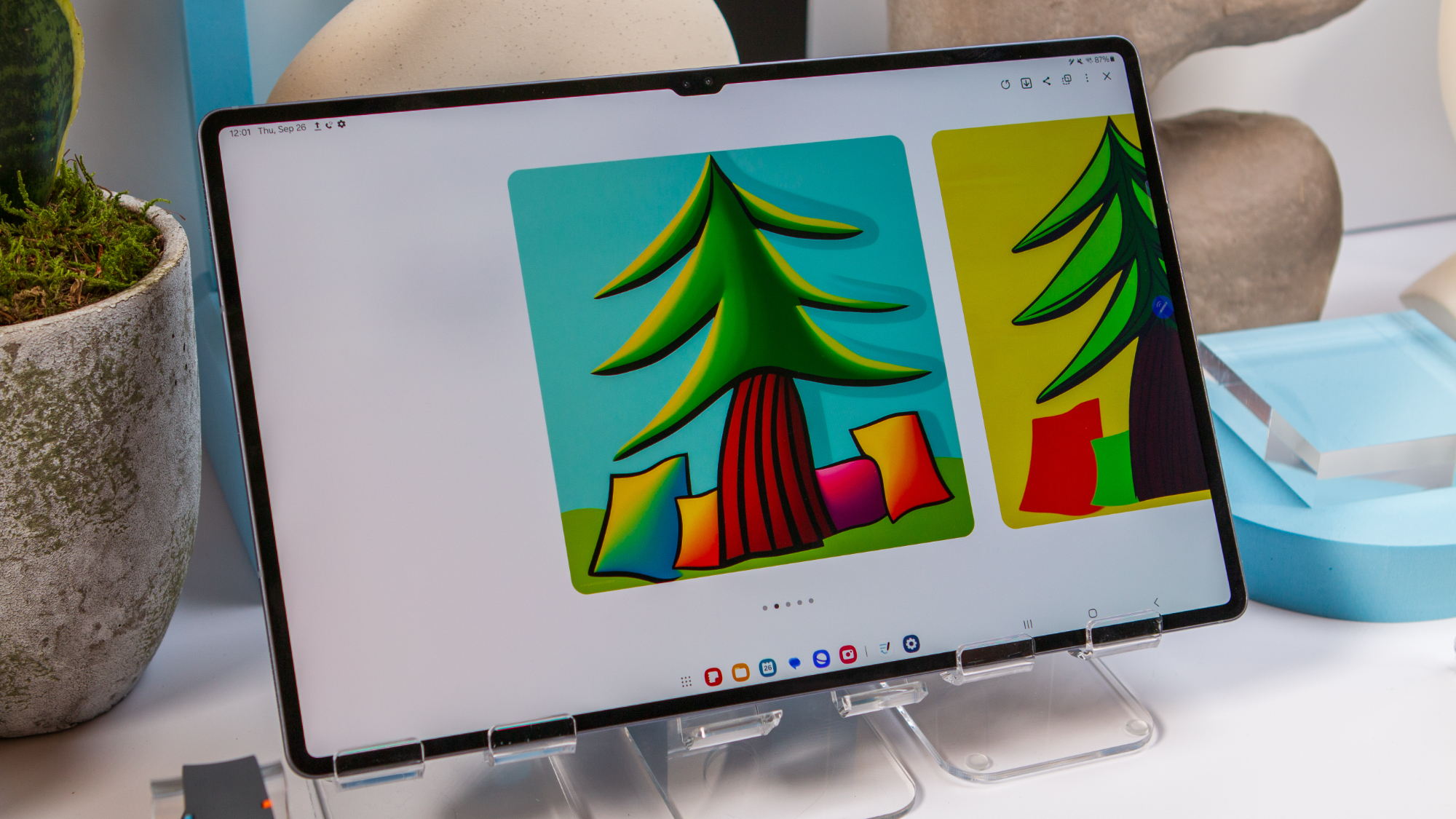
Instead, we were inundated with an almost constant barrage of Galaxy AI comments and blurbs. According to Samsung, 75% of its customers have “engaged with AI features” and there were “18 million uses of Galaxy AI in one week.” Those numbers are downright impressive, especially when considering that they only apply to Samsung’s U.S. market.
Meanwhile, Samsung also stated that there are already more than 100 million Galaxy AI-enabled devices available. More importantly, the company hopes to double that number “by the end of this year.” It’s a lofty goal, for sure, but if there’s one company that could follow through, it’s Samsung.

In order to do so, that means getting Galaxy AI into the hands of more people, whether it be through software updates or releasing new devices. Samsung is opting for both, which started with One UI 6.1.1 on the software side, and the push is continuing with the four devices announced.
So just where does the Galaxy Tab S10 Plus and S10 Ultra fit into the equation? Well, think about all of the features that launched with the Galaxy Z Fold 6, and imagine them on much larger screens. Circle to Search is here, along with Sketch to Image, Smart Select, and even “AI-based Dialogue Boost.”
New year, (mostly) same design
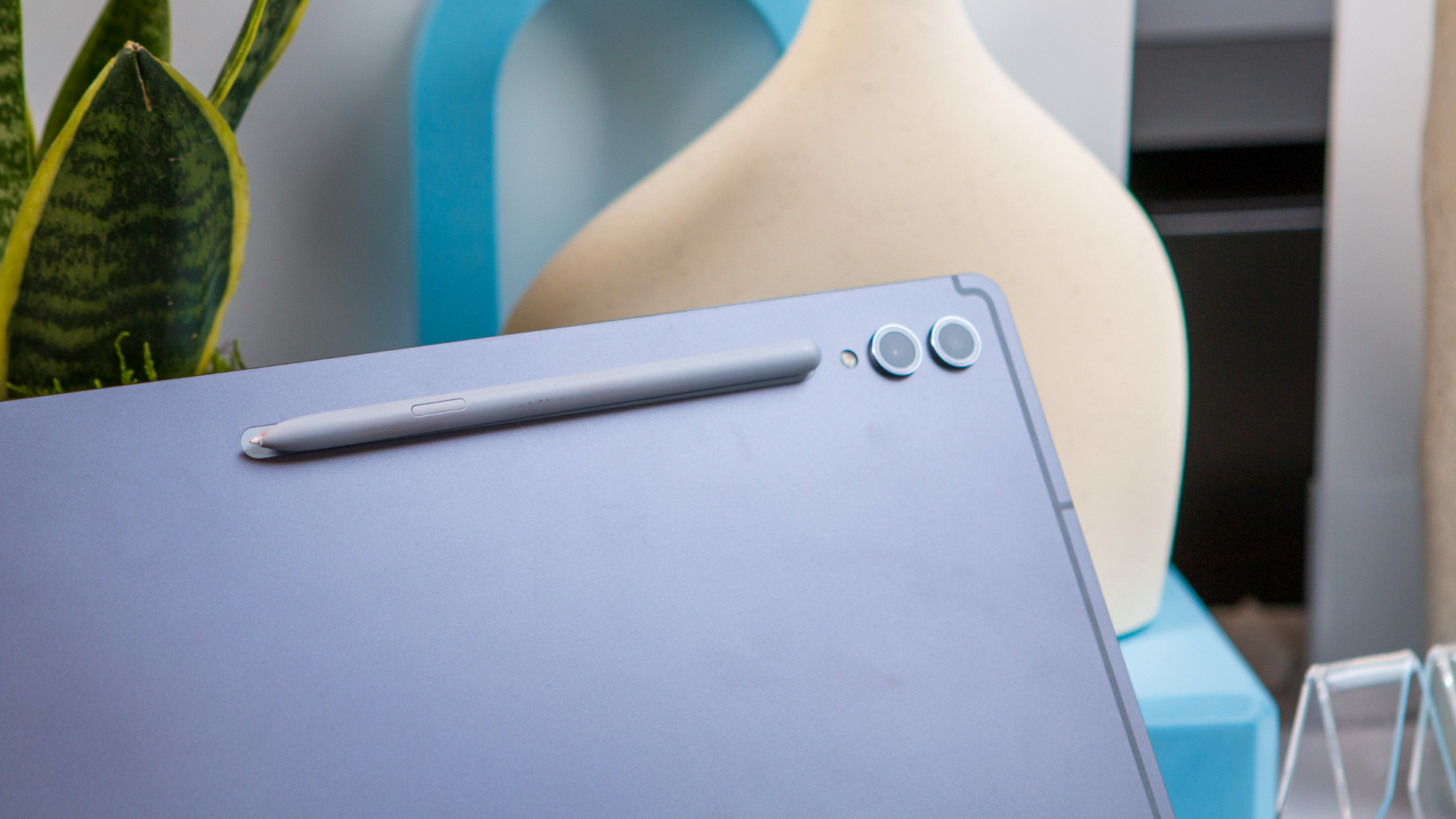
When looking at the hardware, you would be hard-pressed to be able to tell the difference between last year’s models and these new ones. The dimensions aren’t exactly identical, but they are pretty darn close.
The first semi-noticeable difference comes in the form of the Anti-Reflective display, which was first introduced with the Galaxy S24 Ultra. Unfortunately, it’s something that’s rather difficult to capture on camera when you’re in a room surrounded by overhead key lights. However, I did notice that depending on the angle, the glare coming off of the screen wasn’t as bad compared to looking at the Galaxy S24 FE or my own Pixel 9 Pro XL.
It’s not like this should really come as much of a surprise, but Samsung still makes some of the most vibrant displays that I’ve ever laid eyes on. That trend continues with the Tab S10 Ultra, and I can only presume this will also be the case with the Tab S10 Plus. Unfortunately, I wasn’t able to see or use the smaller of the two, leaving me wondering if Samsung simply cares more about the Ultra.
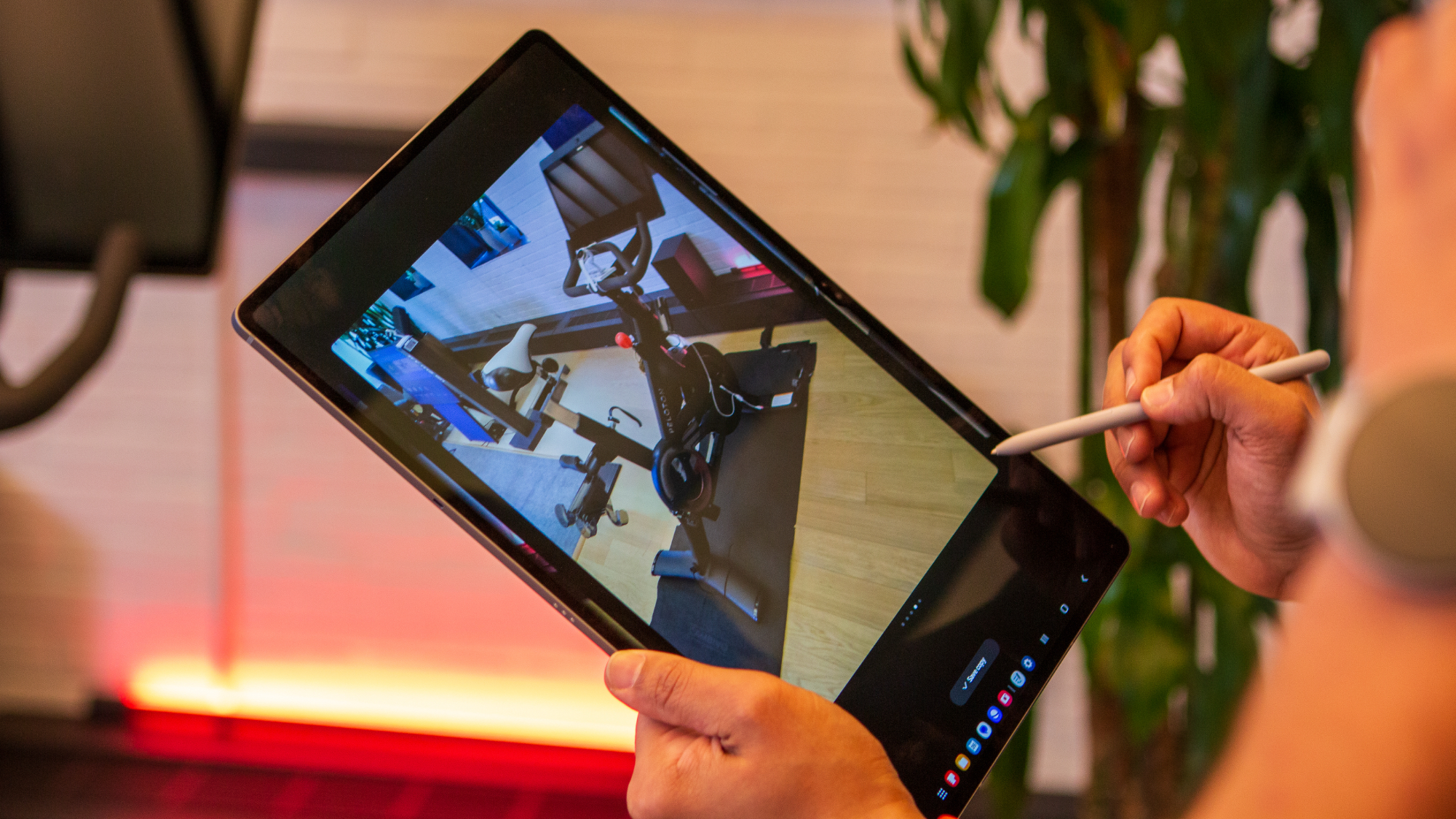
Besides that, we have the same array of buttons around the frame, along with the quad-speaker array, and USB-C charging port on the bottom. On the back, both the Tab S10 Plus and S10 Ultra offer dual rear cameras, with the magnetic S Pen strip placed just to the left.
While it’s definitely possible, it’s also a bit comical when you pick up the Galaxy Tab S10 Ultra with one hand. It’s really not designed for this, but chances are you won’t be standing in the middle of a crowded room trying to hold it with one hand while using the S Pen with the other.
Then again, if you’re using a 14.6-inch tablet, chances are that you won’t be trying to use it with just one hand. This brings us to the keyboard case, which is an area of some disappointment.
New, but old, keyboard case
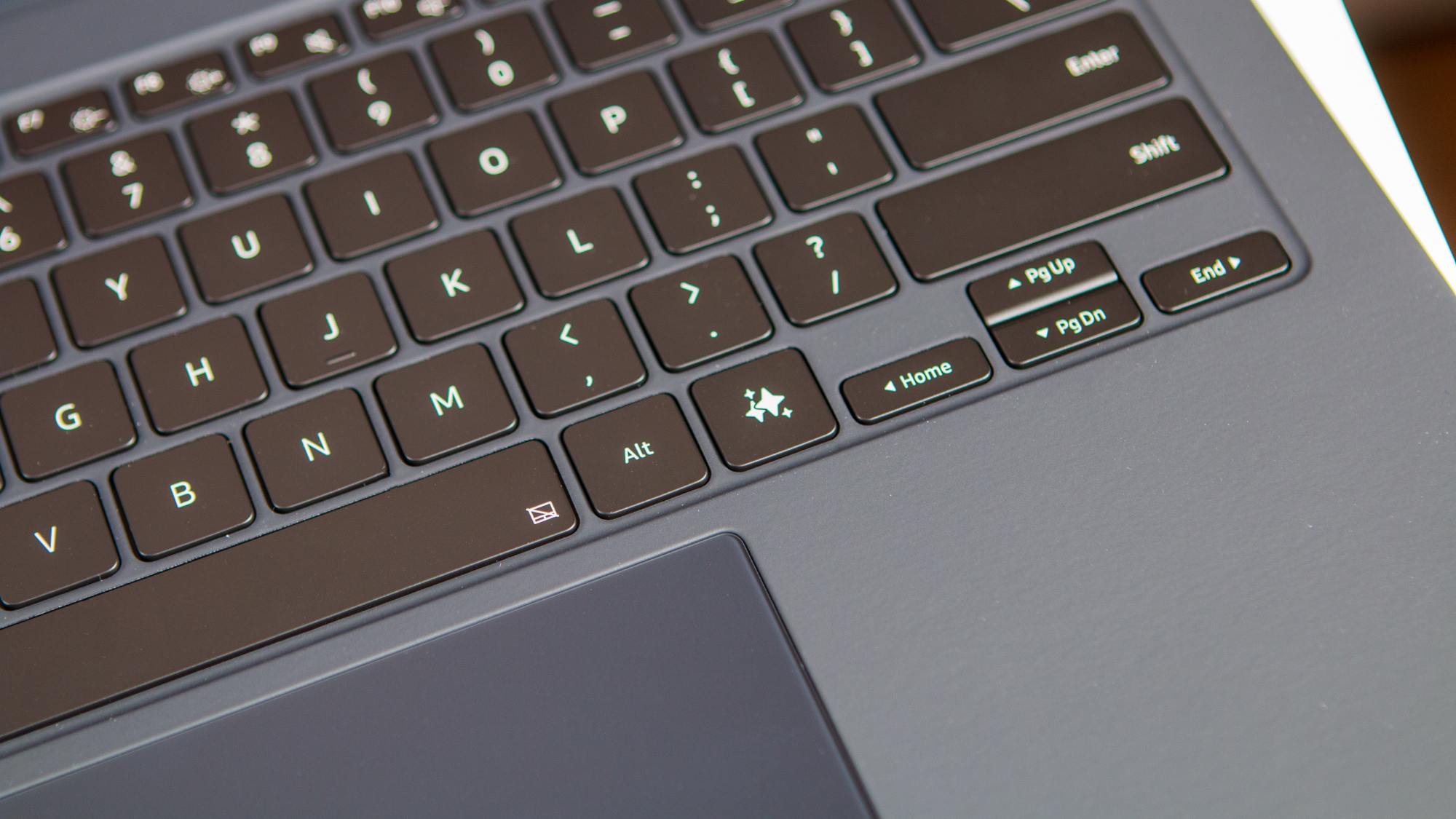
As I mentioned before, Samsung is serious about trying to get everyone and anyone using Galaxy AI. Seemingly following in the footsteps of Microsoft with the Windows Copilot button, there’s a new Galaxy AI button on the keyboard. I’m not sure if it was the intended function, but when pressed, the Google Gemini app would appear.
It’s possible this was just for today’s demonstration, but I’m also curious as to where Bixby plays a role in all of this. Nevertheless, it’s not all that surprising to see, especially considering that the Copilot has been implemented on practically every Windows laptop released this year.
One thing I did notice when looking at the Tab S10 Plus and Ultra product page is that it seems that the “new” Book Cover Keyboard might actually be compatible with the Tab S9 Plus and S9 Ultra. This was one of my big gripes when going from the Tab S8 Ultra to the Tab S9 Ultra, so maybe Samsung is actually listening.
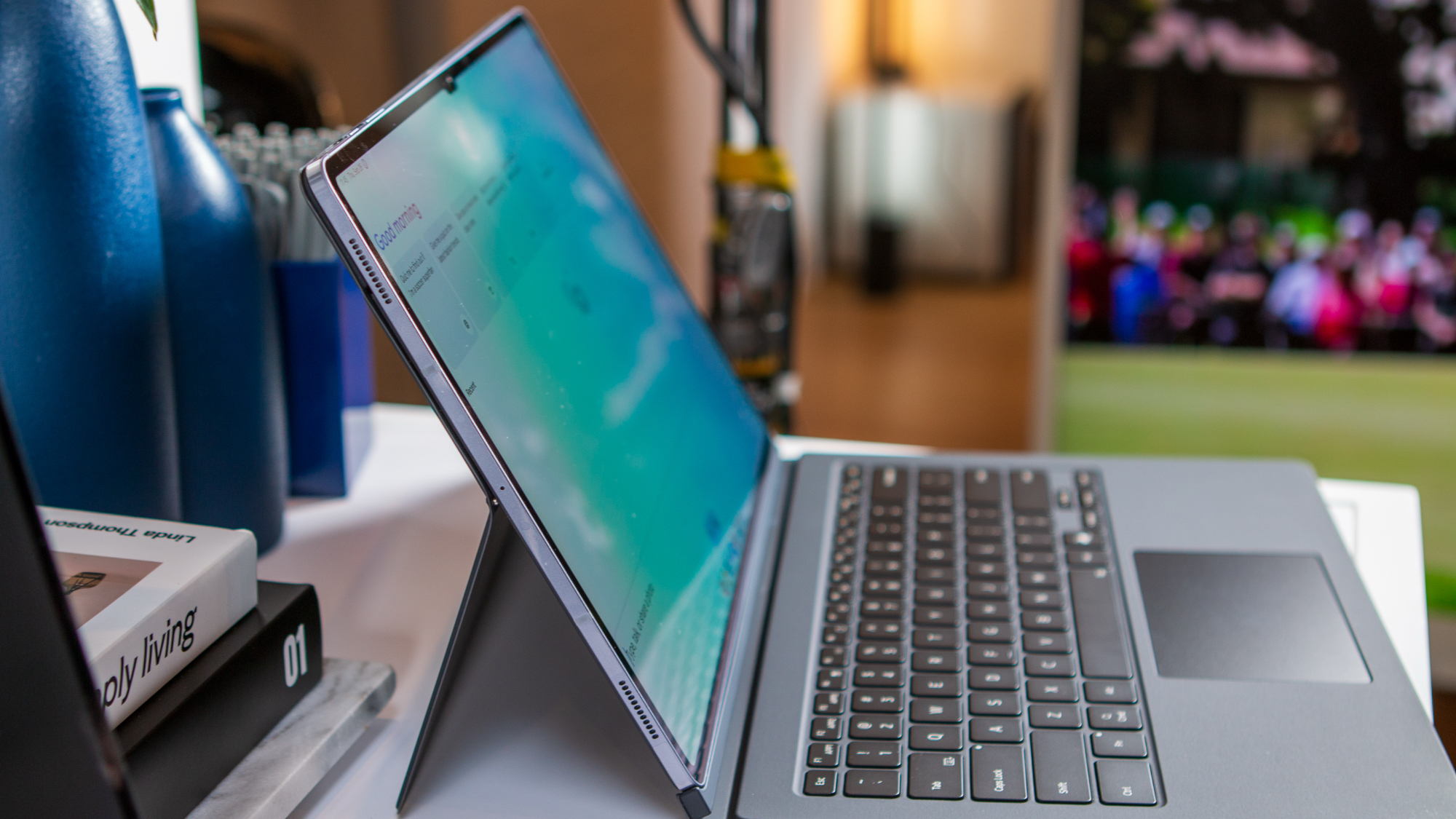
If the Book Cover Keyboard is backward compatible, that’s great for Tab S9 Plus and Ultra owners. What isn’t great is that it didn’t feel like much else had been done to improve the overall design. The last two iterations have been great when using them on a desk or a rigid surface, but things immediately begin to fall apart when using the Book Cover Keyboard on your lap.
I didn’t have the opportunity to sit back on a couch and use the Keyboard, so it’s something I’m looking forward to testing out when it’s time for a review. At this point, I’m not sure what other direction Samsung could go in, save for just “borrowing” Apple’s iPad Pro Smart Keyboard design.
A big surprise
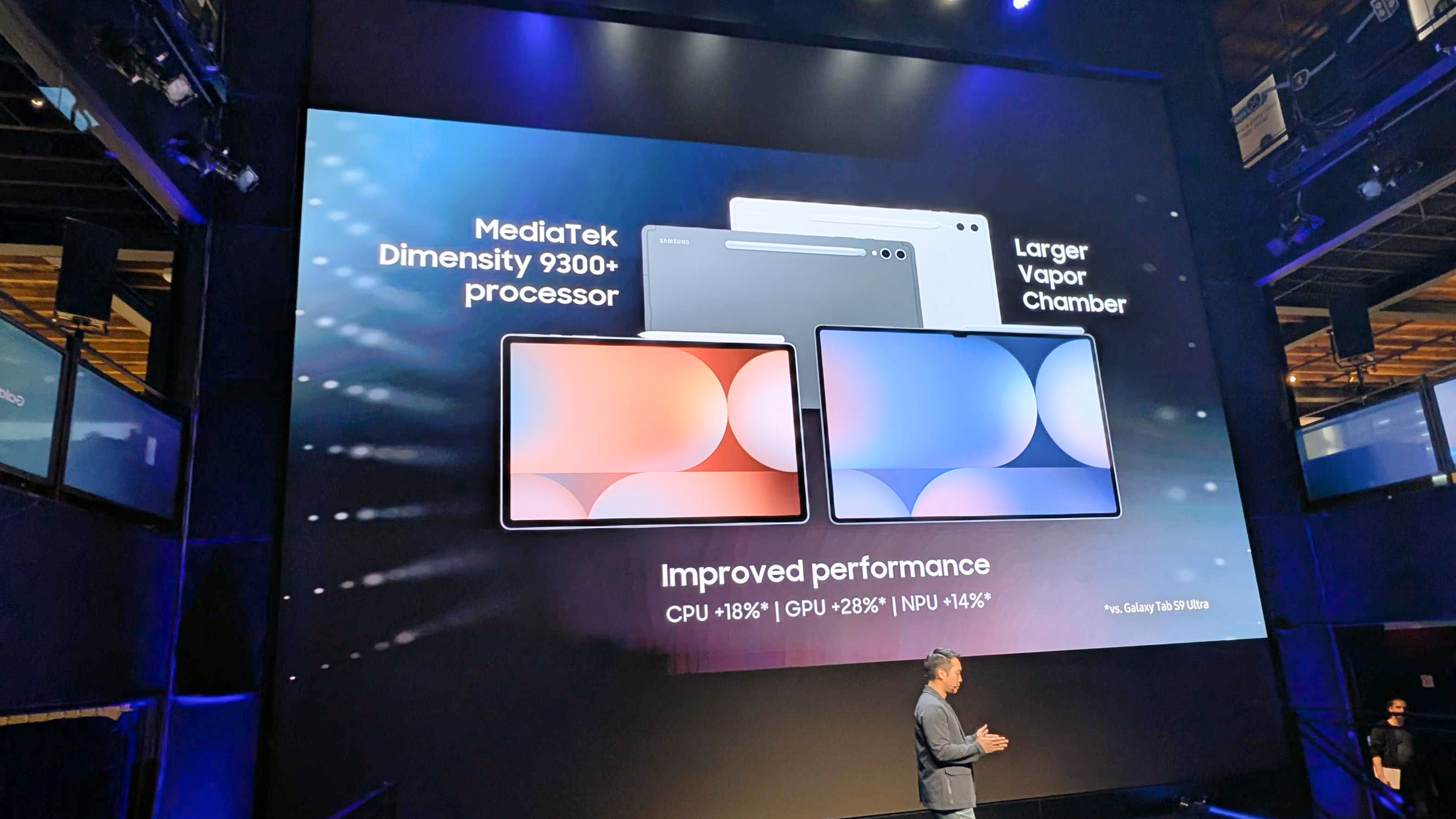
Another surprise was that Samsung opted against using the Snapdragon 8 Gen 3 in its flagship tablet lineup. Instead, we have the MediaTek Dimensity 9300 Plus, paired with either 12GB or 16GB of RAM and up to 1TB of expandable storage. Speaking of which, kudos to Samsung for continuing to include a microSD card slot with its tablets, even if I still believe it should’ve never been removed from Galaxy phones.
Anyways, Samsung claims the Dimensity 9300 Plus SoC provides an 18% boost in CPU performance, 28% better GPU performance, and 14% improved NPU performance. All of that is paired with a “Larger Vapor Chamber,” in an effort to cut on the potential for overheating.
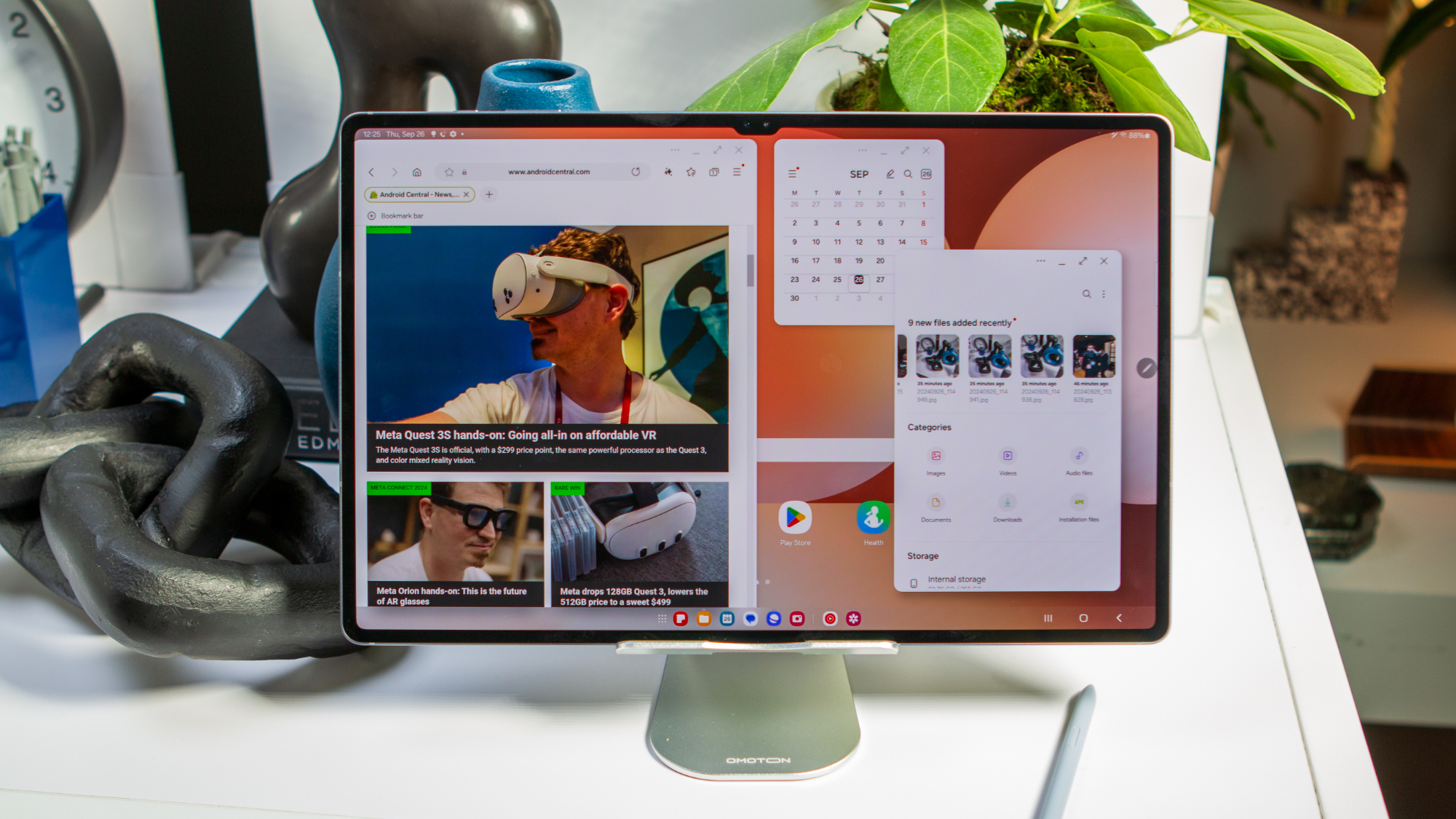
I wasn’t able to really “put this to the test” in my brief time with the Tab S10 Ultra, but everything felt as snappy as I expected. If anything, I did notice that loading into the “classic” Samsung DeX mode seemed faster than I thought, something that was echoed by others at the event.
The decision to move from Qualcomm to MediaTek for its flagship tablets had to have been for a good reason. But, it was interesting to see three new Samsung Galaxy devices announced, none of which are being powered by a Snapdragon chip.
Conclusion
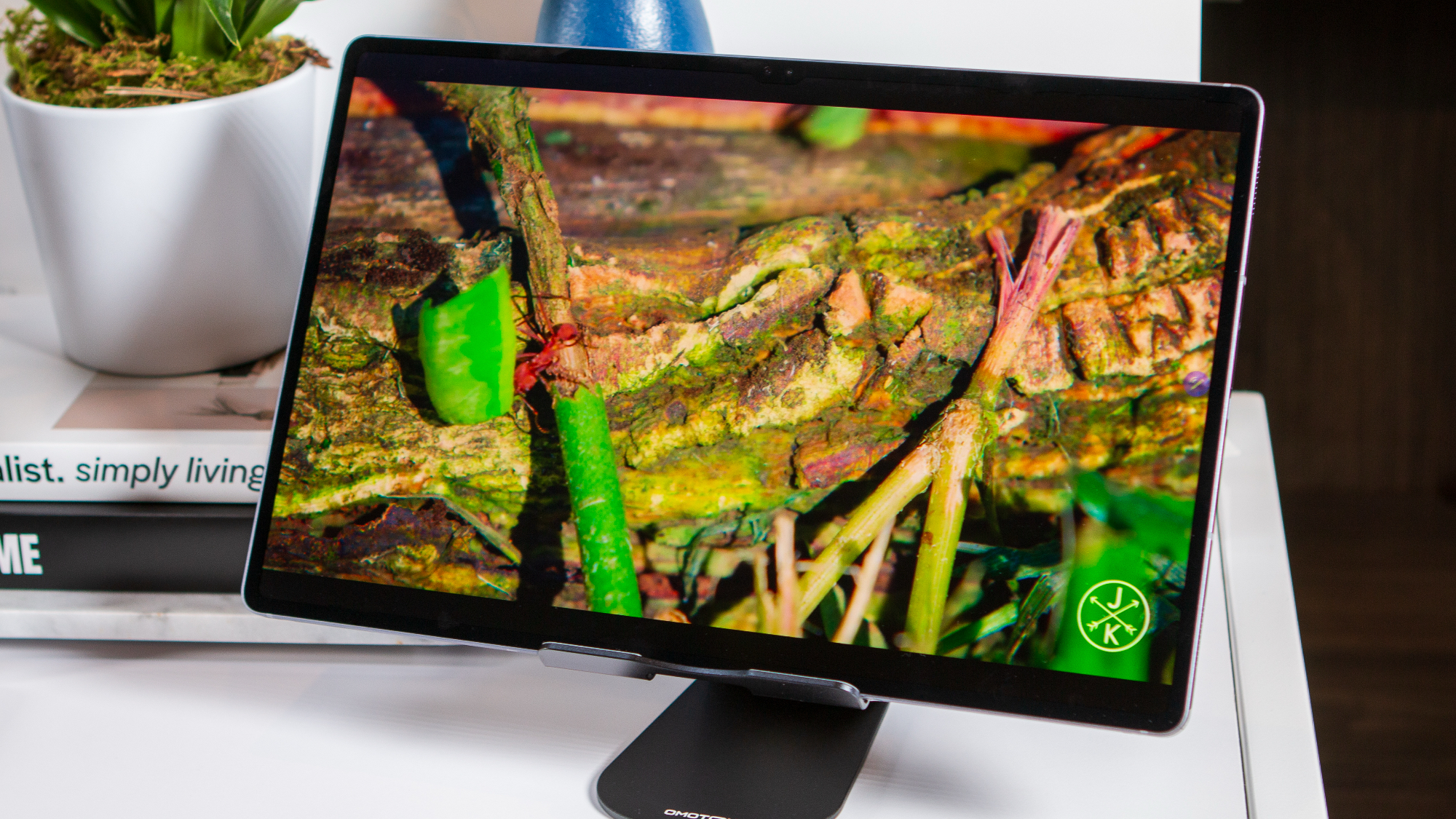
All-in-all, I’m not really disappointed that Samsung stuck to a slightly tweaked design, and even saying that surprises me. The Galaxy Tab S10 Ultra is the poster child for premium Android tablets, and there’s really not much that can compete in this price bracket.
With hardware that’s already refined, Samsung is doing exactly what I expected, as it’s putting more of a focus on software. More importantly, it’s all about Galaxy AI and Samsung looking to find ways for its customers to actually make use of these features.







